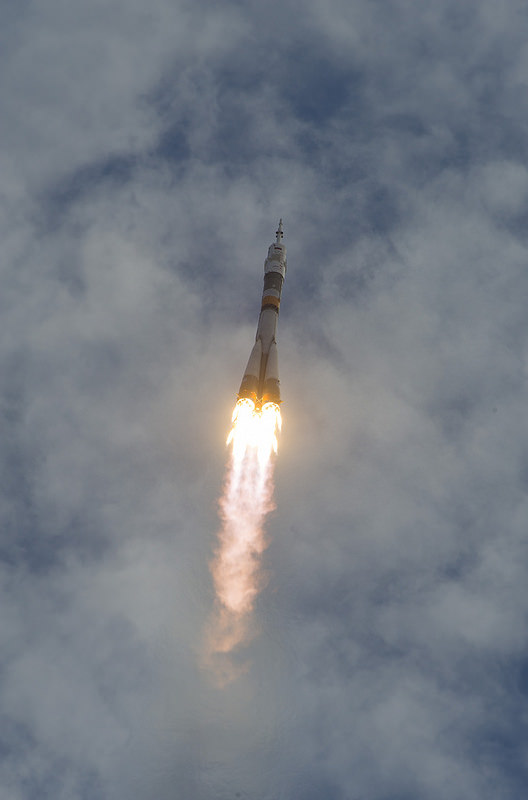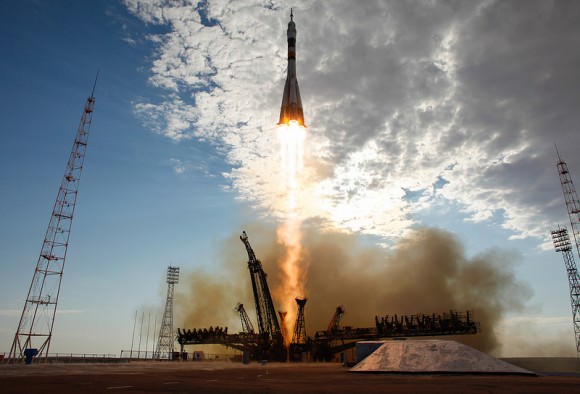At 9:40 p.m. CDT a Soyuz TMA-05M rocket lifted off from the Baikonur Cosmodrome in Kazakhstan carrying Expedition 32 Commander Yuri Malenchenko, NASA Flight Engineer Sunita “Suni” Williams and JAXA Flight Engineer Akihiko Hoshide to the International Space Station. It was a beautiful launch on a hot summer day at the Cosmodrome — watch the video after the jump:
(My favorite part was when the Soyuz punched a hole in the clouds!)
Exact time of the launch was 9:40:3.91 CDT, docking with the ISS will occur on Monday at 11:52 p.m. CDT. Read more about the crew of Expedition 32 here.
Of historical note, the Expedition 32 launch occurred on the same day that the Apollo-Soyuz Test Project launched in 1975. Designed to test the compatibility of rendezvous and docking systems and the possibility of an international space rescue, the nine-day Apollo-Soyuz mission brought together two former spaceflight rivals: the United States and the Soviet Union. Without the success of that project, we might not have had an International Space Station in orbit today.



Amazing NASA Expedition -32, all the very best for the completion of the mission!
It’s not just NASA that deserves credit.
That’s a Russian rocket, since you don’t know what “Soyuz” means (Union).
is not a NASA expedition, so no credit for NASA
NASA and JAXA have just 2 flight engineers on board
Amazing! It looked like the driver pushed the gas pedal all the way, to punch that hole in the clouds 🙂
Awesome punch through.
I’ve never heard a good explanation of why it takes two days to get to the ISS. Surely a precise launch could get them there in hours. Is it to give them time to adapt to micro-gravity (to stop throwing up)?
~URP~ I read somewhere recently that Space-X is proposing a more direct route to the ISS but have lost that link. Dzzzzz…..
Try this explanation.
Ok, I did. It may be a fun video game but it doesn’t answer my question. If you launch precisely and correctly, a few minor adjustments in orbit should have you there in hours instead of days.
It’s easier said than done; it’s considered too dangerous to launch any rocket directly towards the ISS, so rockets are deliberately launched when the ISS is not passing directly overhead at the time of the rocket launch.